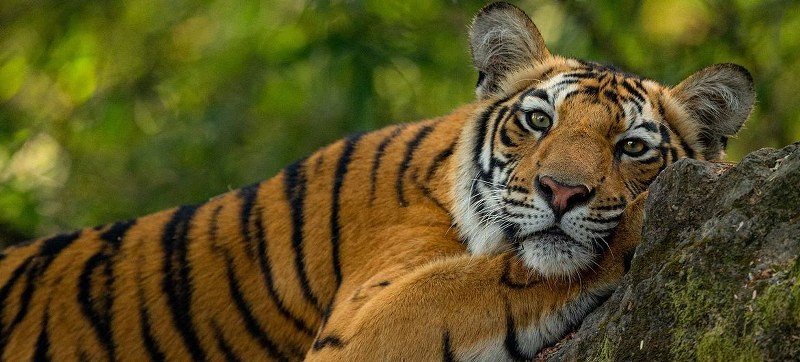 Biodiversity
Biodiversity
Global biodiversity agreement mobilises $200 billion boost to protect flora, fauna
Governments on Friday reached agreement on a strategy to raise an additional $200 billion each year to better protect the world’s flora and fauna by 2030.
Delegates met in Rome this week for the resumption of the UN Biodiversity Conference to hammer out an agreement at COP16.2 after attempts to reach a deal on financing at COP16 in Cali, Colombia, fell short last November.
It is hoped that the hard-won decisions made by parties to the UN Convention on Biological Diversity will shore up biodiversity and fragile ecosystems which are bearing the brunt of increased conflict, deforestation, mining, toxic waste dumping and other environmental impacts worldwide.
“We very much welcome this announcement,” the UN Secretary-General’s Spokesperson Stéphane Dujarric said on Friday. “We need to mobilise at least $200 billion dollars a year by 2030 to close the global biodiversity finance gap.”
However, discussions on who pays to protect the Earth’s biodiversity have long been a point of contention, while more than a million plant and animal species are now threatened with extinction.
Hammering out an agreement
“These days of work in Rome have demonstrated the commitment of the parties to advance the implementation of the [Kunming-Montreal] Global Biodiversity Framework,” said COP16 president Susana Muhamad, referring to the landmark 2022 agreement and underscoring “the collective effort to reach consensus of key issues that were left pending in Cali”.
Delegates worked through Friday morning following days of intense negotiation and reached decisions on outstanding issues including biodiversity finance, planning, monitoring, reporting and review.
Negotiators also agreed on a set of indicators to measure global and national progress towards implementing the Global Biodiversity Framework.
The framework was finalised a little over two years ago – a historic UN-driven agreement to guide global action on nature through to 2030, which was hashed out at meetings in Kunming, China, and Montreal, Canada, in 2022.
Keeping promises made in Canada and China
The Global Biodiversity Framework aims to address biodiversity loss, restore ecosystems and protect the rights of Indigenous Peoples, who suffer disproportionately from biodiversity loss and environmental degradation.
The global framework also contains concrete measures to halt and reverse nature loss, including protection measures covering 30 per cent of the planet and 30 per cent of degraded ecosystems by 2030.
Currently only 17 per cent of land and around eight per cent of marine areas are protected.
“Only by working together can we make peace with nature a reality,” said Ms. Muhamad.
‘Multilateralism works’
Astrid Schomaker, Executive Secretary of the UN Convention on Biological Diversity, said the positive outcome in Rome shows that “multilateralism works” and is “the vehicle to build the partnerships needed to protect biodiversity and move us towards peace with nature”.
After intense negotiations, parties to the convention agreed on a way forward in terms of resource mobilisation with a view to close the global biodiversity finance gap and achieve the target of at least $200 billion a year by 2030.
This includes working to improve existing financial tools, especially to provide resources for developing countries, under the temporary leadership of UN agencies and partners.
“We now have a clear mandate” for implementation, Ms. Schomaker said. “As we do this and implement the other supporting elements for resource mobilisation, the world will have given itself the means to close the biodiversity finance gap.”
On the margins of COP16.2, the Cali Fund, which was created in Colombia in late 2024, was officially launched, ushering in a new era for biodiversity financing.
“Today’s launch is the culmination of multilateralism that delivers,” said Elizabeth Mrema, Deputy Executive Director of the UN Environment Programme (UNEP).
“The ball is now in the court of businesses around the world. Those who pay into the fund will go down in history as pioneers and will reap the benefits as the public increasingly recognises the importance of giving back to nature.”
Here’s how the Cali Fund will benefit biodiversity:
Companies making commercial use of data from genetic resources in nature in a range of lucrative industries will be expected to contribute a portion of their revenue to the fund
Contributions to the Cali Fund will be used to implement the UN Biodiversity Convention, including by supporting the implementation of the Kunming-Montreal Global Biodiversity Framework
At least 50 per cent of the Cali Fund resources will be allocated to Indigenous Peoples and local communities, recognising their role as custodians of biodiversity
Support Our Journalism
We cannot do without you.. your contribution supports unbiased journalism
IBNS is not driven by any ism- not wokeism, not racism, not skewed secularism, not hyper right-wing or left liberal ideals, nor by any hardline religious beliefs or hyper nationalism. We want to serve you good old objective news, as they are. We do not judge or preach. We let people decide for themselves. We only try to present factual and well-sourced news.







